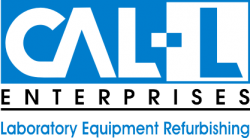Identification of suspect substances depends on reference materials that are in short supply.
Attempts to understand and control new synthetic recreational drugs are being hindered by analysis laboratories’ inability to obtain pure samples of the compounds, experts say.
The growing problem of synthetic drugs — which include mimics of cannabis and amphetamine — came to the fore in the United Kingdom last year as politicians rushed to ban mephedrone, which had been linked in the media to several deaths. Mephedrone and several related compounds, known collectively as cathinones, are now controlled substances in the United Kingdom and in many other countries. But new drugs are already appearing that circumvent these bans.
In order to determine what a substance actually is, analytical chemists need to compare it with a pure version of what they think it might be, using techniques such as gas-column mass spectrometry (GCMS). But Robert Lantz and Oliver Sutcliffe told reporters at the American Chemical Society meeting in Denver, Colorado, that these ‘reference standards’ are hard to come by for emerging synthetic drugs.
Sutcliffe’s group at the Strathclyde Institute of Pharmacy and Biomedical Sciences in Glasgow, UK, has been working on methods for synthesizing and analysing pure cathinones. However, the team does not have a licence to distribute the compounds to other laboratories. Major chemical suppliers are also not permitted supply the drugs. A lack of reference standards can have serious repercussions for criminal cases.
“One of the problems is simply that it’s often very difficult for legitimate laboratories to obtain pure reference standards to make a good comparison so that when you go into court we can say definitely this material is what we say it is,” said Lantz, who has recently been working on synthetic cannabinoids at Rocky Mountain Instrumental Laboratories in Fort Collins, Colorado.
Arms race
Most legal and grey-area synthetic drugs are thought to originate from China, and the laboratories producing them are in a constant arms race with the legal systems of countries fighting the drugs.
“Basically, what these clandestine labs are doing is handle-turning,” said Sutcliffe. “They know the basic chemical structure of a cathinone has some pharmacological activity and by tweaking it they can confound some of the law-enforcement agencies.”
Sutcliffe says that law-enforcement agencies and academics should be proactive, and look to identify the compounds that such companies are likely to turn to next, rather that waiting for a new chemical to appear on the market.
But at sessions on chemistry and law at the Denver meeting, a number of speakers acknowledged that some forensics laboratories in the United States and elsewhere are not up to the task. They may be staffed by people who are not properly trained in chemistry and do not understand the scientific basis of the analyses they are doing.
Combined with the profusion of synthetic drugs on the market, this can present major problems.
“If you’re doing GCMS on a sample and it almost matches mephedrone, well maybe it’s butylone,” said Lantz. “A good analytical chemist would be able to say ‘yes, this is a slight variation’ as opposed to a button pusher who would simply say ‘it doesn’t match anything in my library’.”
The ability to characterize suspect substances is likely to become even more important for UK and US law-enforcement agencies in future. It is now illegal to import a number of these substances into the United Kingdom and parts of the United States, but the chemical building blocks used to produce them are common compounds that would be hard to ban — or even to control.
This raises the spectre of homegrown production. “I’d be surprised if [that] doesn’t happen,” said Lantz.
